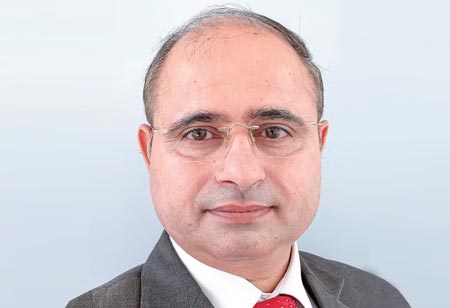Vivek is having experience of more than two decades in metal cutting tool industries & responsible for Project Management, Product Management, Application Engineering & Technical Centre in India for Ceratizit Group
Our lives are connected. Connected at both extrinsic and intrinsic levels with each other, our nature and on a larger scale to this universe. Now to sustain this life, irrespective of variegated needs of individuals, we have been consuming since the dawn of civilization. Alarmingly the growing needs, services, and industrial systems demanded by society has provoked in the last century a great impact on the planet, contributing to the increase in the Metabolic Rift.
The metabolic rift corresponds with the existing distance between the natural capital (provided by the planet) and the social capital; it is also defined by the consumption of energy resources and materials caused by the humans’ economic activities. The mitigation of the metabolic rift is the origin of the current framework that is used to structure and manage Sustainable Manufacturing (SM) from the three dimensions known as: Economic Capital-economy, Environmental capital-ecology and Human capital-equity.
They interact as a whole and in establishing the triple bottom line (TBL or 3E) to achieve three objectives: (1) improve the economic, environmental and human performance, simultaneously; (2) reintegrate the natural ecosystems; and (3) mitigate the metabolic rift leading us to the currently accepted definition of Sustainability: sustainable development is the development that meets the needs of the present, without compromising the ability of future generations, to meet their own needs.
Sustainability Framework In Machining
Sustainability in machining can be assured by reducing energy consumption for machining processes, minimizing waste (less generation of waste and increasing the recycling of waste) and minimizing Carbon footprint of machining processes. The basic framework of Sustainability in machining which consists of the major Strategies which with the help 6 key drivers constructs 3 pillars of Sustainability is well represented in the image.
Process Optimizations
The domain of Process Optimization quite vast as encompasses multiple sub-domains starting from Material selection & drawing study to ultimate delivery of the finished product. This whole work-chain involves CAD, CAM, CAPP, Machine, Cutting tools and so on. Optimization is possible in each domain towards the coveted goal of Sustainability in the following ways.
1. Utilization advanced Thermo-mechanical simulation and Finite Element based process optimizations in terms of Material selection, Coating and designing is contributing significantly in minimizing Energy requirements, environmental hazards & carbon footprints.
2. Advancement of CAD/CAM technologies and integration of CAD/CAPP/CAM at single platform done a remarkable job by simplifying the whole process, reducing Machine uptime and down time.
3. Advanced feature oriented CAM techniques such as Adaptive Roughing ( Profit Milling, Volumill etc) together with Machines with multiple & simultaneous DOF which has reduced machining time and difficulty significantly. As an example switching to Adaptive roughing technologies for machining Ti6Al4V reduces cut time with respect to conventional by 30-40%. Henceforth reducing the machine hour and energy consumption for the same.
Advanced Cutting Tool & Coatings
Sustainable machining is about producing a part by the following concepts:
• Maximize the use of the cutting tool
